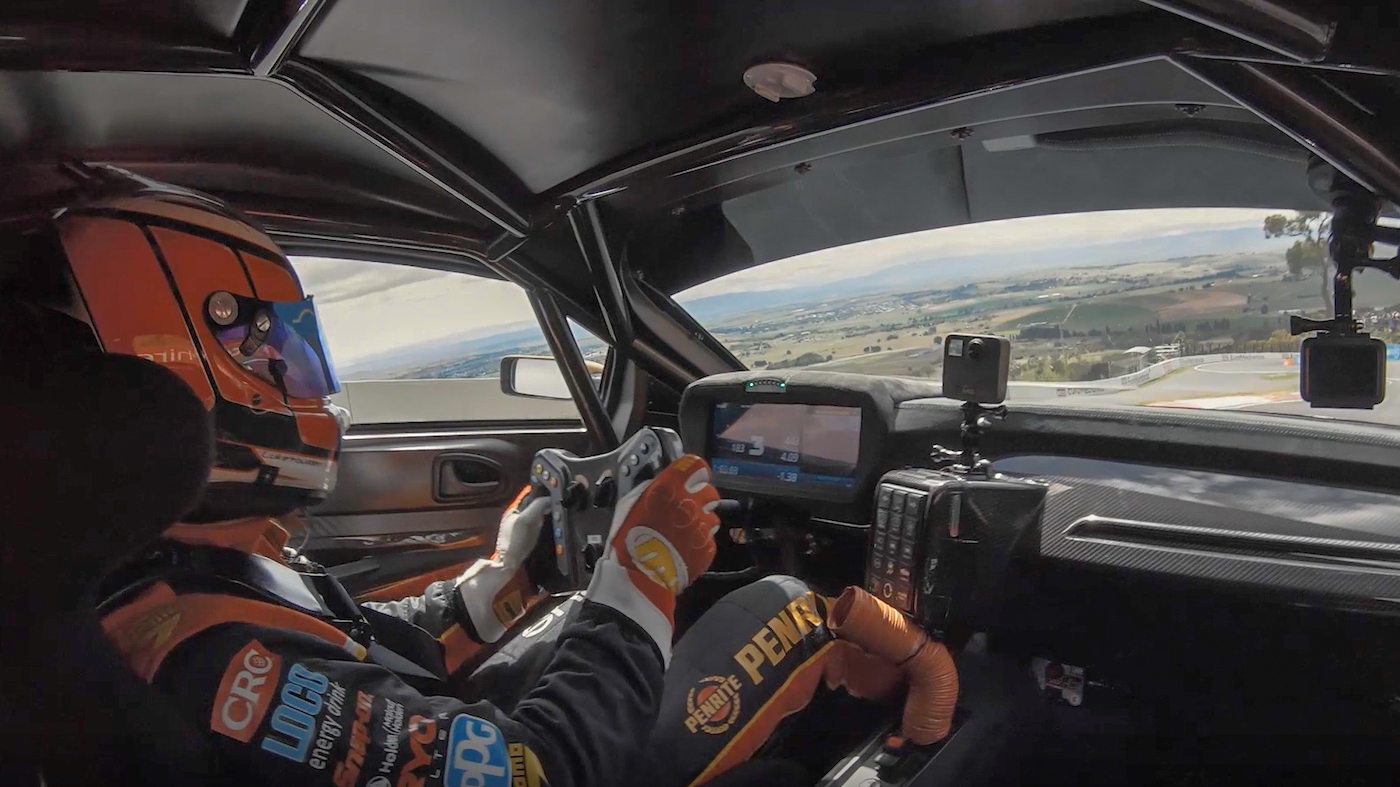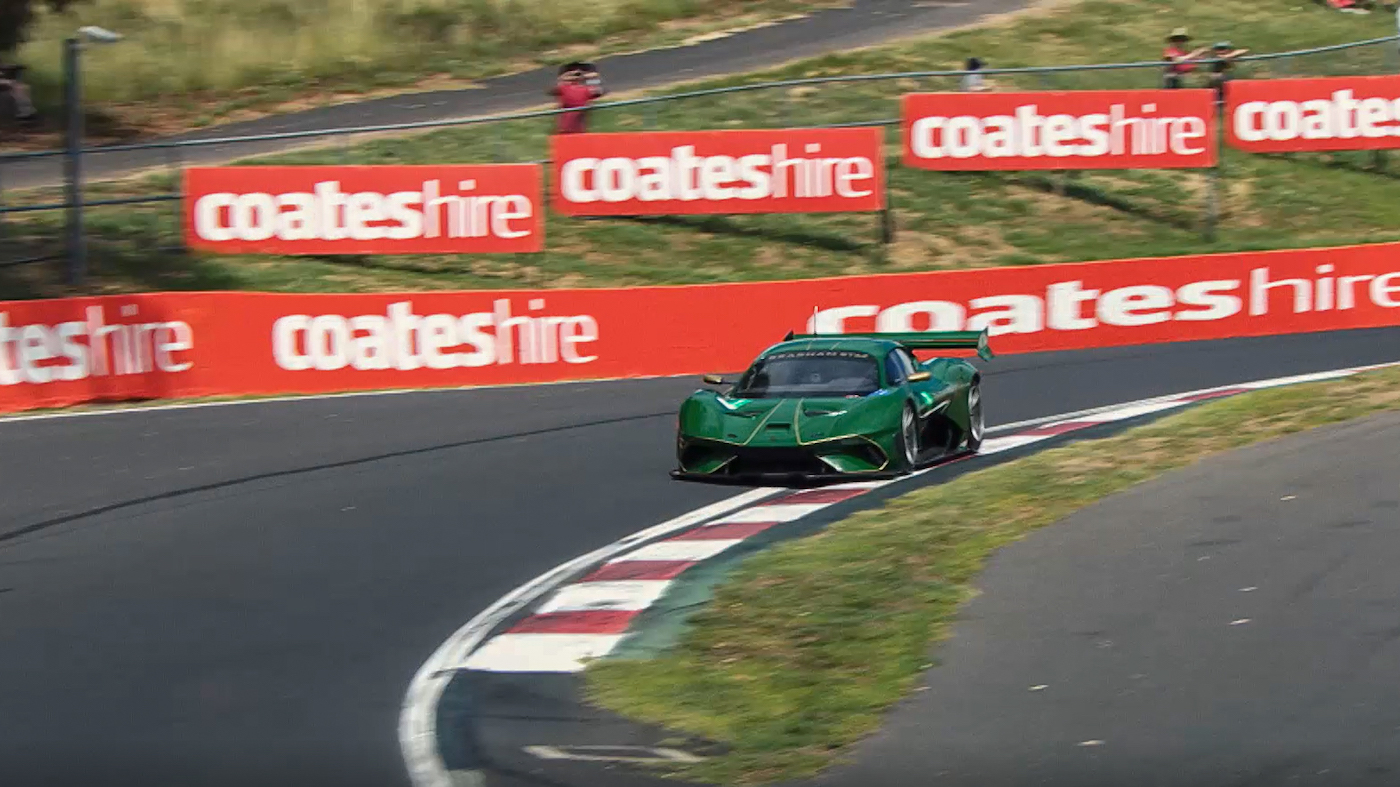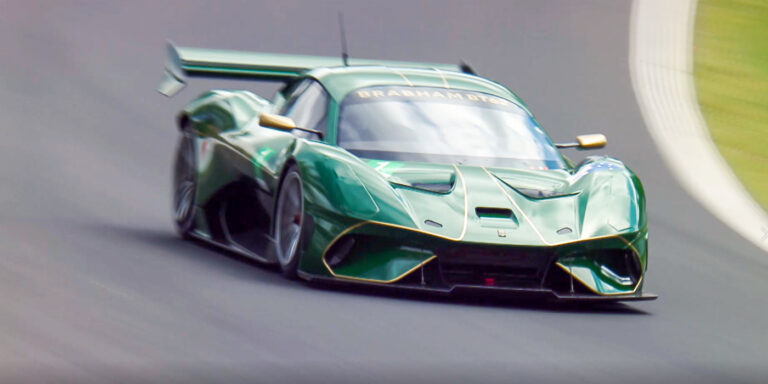The first weekend in February 2020 saw the running of the Bathurst 12-hour event in the V8 Supercars series, Australia’s most popular racing class. The same weekend in 2019 saw the Brabham BT62 make headlines, setting the fastest time ever for a closed-wheel vehicle around Bathurst, Australia’s most famous racing circuit, as well as its most challenging.
So just how fast was that lap, and how did Brabham do it?
The fastest-ever lap around Bathurst in a V8 Supercar was last year’s Bathurst 1000 pole position qualifier, Scott McLaughlin, at 2:03.378 in a Ford Mustang GT. The fastest-ever GT3 lap at Bathurst was driven in 2016, in a McLaren 650S GT3 – a time 2:01.567. A de-restricted GT3 car (an Audi R8) has also gone around the track in a time of 1:59.321.
On 2 February 2019, the Brabham BT62 set a lap time of 1:58.679, shaving 2.9 seconds from the GT3 lap record and 4.7 seconds from Australia’s fastest V8 Supercar lap. The record is more remarkable when you consider that it was broken after only 12 exhibition laps, without any real set-up time. The key was of course that the driver, Luke Youlden has an incredible talent, but also that the car has outstanding vehicle dynamics.
Youlden has experience of the Bathurst circuit, having lapped the Mount Panorama circuit thousands of times, and completing the gruelling Bathurst 1000 race multiple times over his professional career, gaining a victory in 2017. He says that the BT62 gave him an edge though, offering great speed up the Mountain Straight, agile handling through the twisting top section of the circuit, and enough power to seemingly shorten Conrod Straight and The Chase before crossing the start/finish line.

To put the record lap in perspective, the BT62 covered a distance longer than an Olympic swimming pool every second, averaging 117mph (188.5km/h) around the 3.86 mile (6.213km) circuit. At those speeds, and given the BT62’s low weight and high downforce (up to 1,600kg at top speed) – the car could have driven around 14% of the lap upside down, according to Brabham engineers.
The car pulled maximum loads of 2.89g in the corners, 1.24g under acceleration, and 3.51g under braking. That maximum braking instance involved 80kg of leg pressure applied to the pedal, and resulted in the BT62’s carbon/carbon brakes heating to 675°C – a more common operating temperature for the brakes used in F1 cars.
The power to reduce the 1.86 miles (3km) of straights comes from the BT62’s 5.4 litre naturally aspirated V8 engine, which produces 700hp at 7,400rpm. Combine this engine with a 63kg six-speed Holinger racing gearbox with a super-fast gear change, and you have a hypercar capable of the kind of acceleration that helps break lap records.
The dynamics details
Power is nothing without control, however, and the BT62’s chassis dynamics and aerodynamics proved invaluable over the twisting top section of the mountain circuit.
The chassis is manufactured from lightweight, high-tensile steel to provide exceptional torsional rigidity, allowing Brabham’s engineers to concentrate on tuning the suspension to deal with the track rather than compensating for compromised chassis performance. The chassis features adjustable anti-roll bars, full camber adjustment, and four-way adjustable racing dampers.
Working with the chassis to maximise grip is an aerodynamics package producing up to 1,600kg of downforce at top speed. The BT62’s sculpted body is designed to manage airflow over the whole body as a continuous surface, which optimises aero performance by keeping the high-pressure air working on the upper surfaces and low-pressure air working on the underfloor. Any low-pressure wake is kept away from the critical aero surfaces and air intakes, ensuring maximum downforce and adequate cooling flow to the powertrain.
The result is 1:58.679 around Bathurst, and highlights the importance of vehicle dynamics in smashing lap records.






